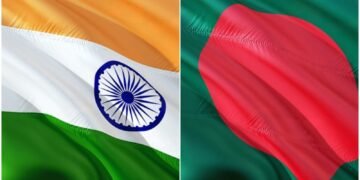Martin Luther Christian University (MLCU) held an exhibition today on traditional sports and games, many of which are in danger of dying out in the digital age.
The Department of Nutrition and Dietetics, as part of the National Education Policy 2020’s promotion of Indian language, arts and culture, held an exhibition on the common indigenous games of the North East today at university’s Umsawli campus. The exhibition is one of the academic experiential learning activities for students opting for the minor paper in Nutrition, Sport and Fitness, with the main objective being to popularise, reintroduce and demonstrate common traditional games of the region.
Bikika Laloo Tariang, former head of the Department of Library and Information Science at North-Eastern Hill University (NEHU), was the resource person for the exhibition. In her session she shared her experience and knowledge on the importance of preserving and promoting indigenous games. She related her research with her experience in which she mentioned that these games are recreational activities that have bountiful benefits linked to health, building community relationships and have tourism potential too.
MLCU Vice-Chancellor TK Kharbamon stated that traditional games are gradually losing their identity and are being hybridised with Western games. She mentioned that indigenous games and sports act as a cultural transmitter that resonate the culture, language and heritage of a community.
Prior to the exhibition, Wanphai Nongrum, proprietor of You and I Arts Cafe, had the opportunity to train a few students on common traditional games of the Khasi and Jaintia, such dieng-ia-peh, pynshat latom, mawiabir, kot kudi bad latai, siat sbai, maw-kor-ka-tia, and khla bam blang, and later these games were demonstrated during the programme. Other common games such as mawdon-mawkait, sohtynkoh, hai iu, jingsiat khnam and mawkynting were also highlighted during the event.
A few indigenous games from Mizoram (Insuknawr), Manipur (Hiyang tanaba), Arunachal Pradesh (porok-panin sinam) and Nagaland (aki kiti) were also exhibited. Even the famous kabaddi, and similar games of neighbouring countries such as the gilli-danda played commonly in Bangladesh and Nepal, was demonstrated.






























